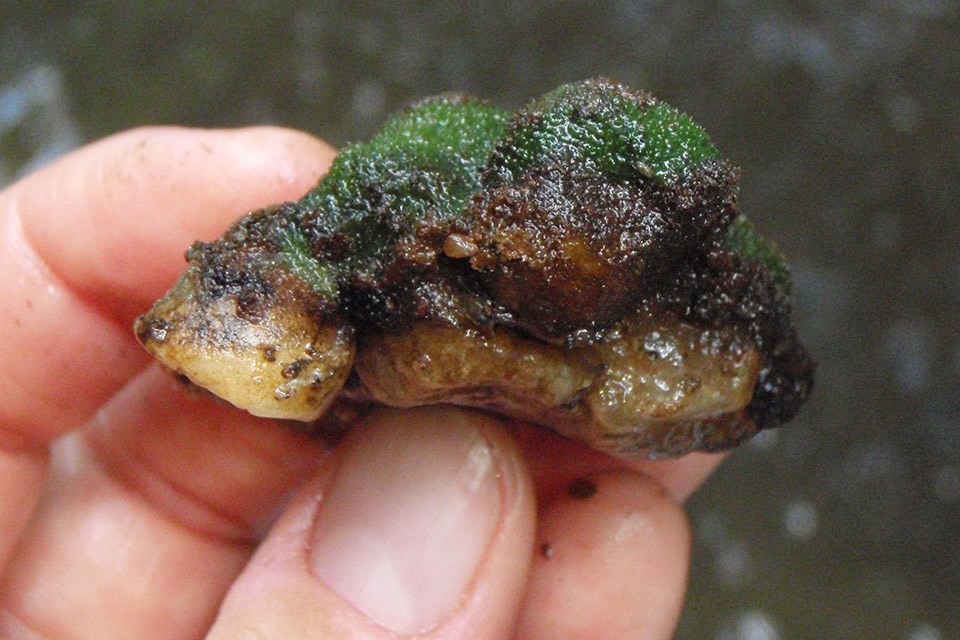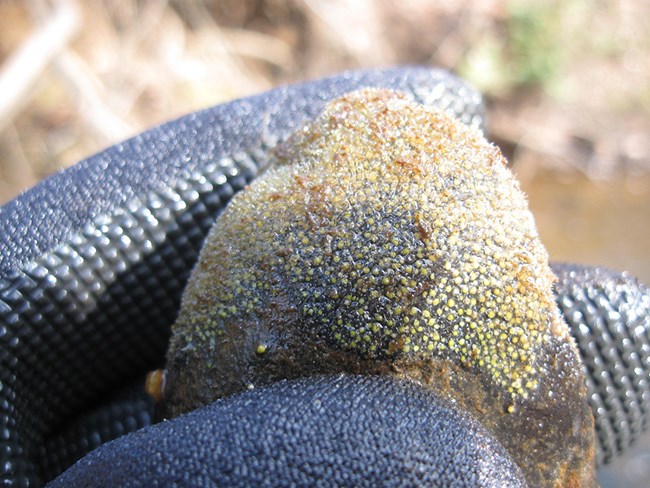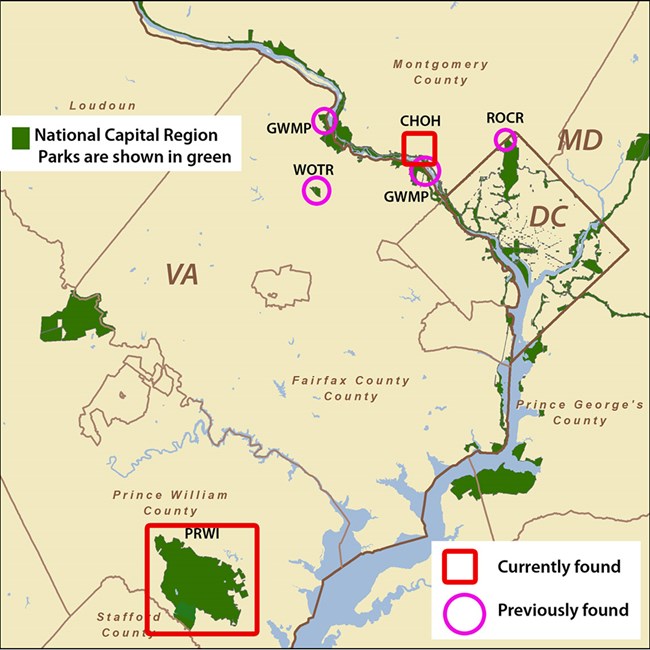Last updated: October 6, 2020
Article
Freshwater Sponges

NPS/Tonya Watts
Importance
Freshwater sponges grow on sturdy submerged objects in clean streams, lakes, and rivers. Because they are sensitive to water conditions, their presence indicates high water quality and low levels of pollutants.
Sponges are filter feeders. They obtain food from the flow of water through their bodies and from symbiotic algae. They also serve as food for ducks, crayfish, and a variety of macro-invertebrates including caddisflies, midges, lacewings, and spongillaflies.
Of the phylum Porifera to which all sponges belong, only one family (Spongillidae) occurs in freshwaters of the United States, the rest are found in marine environments.

NPS/Tonya Watts
Basics of Freshwater Sponges
Freshwater sponges are non-moving organisms that live at the bottom of water bodies. They are invertebrates (have no backbone) and do not have organs, but instead have specialized cells that help them filter water for food.
The species Ephydatia muelleri found in the National Capital Region (NCR) is often green because of algae that lives in the structure of the sponge. For this reason, many people mistake freshwater sponges for algae, but sponges have a coarse texture, and are not slimy like algae.
Freshwater sponges filter organic particles and bacterioplankton from water for food and also consume some products produced by their symbiotic algae. They can reproduce sexually, or asexually when small pieces are broken off and grow into new sponges or when the sponge forms gemmules—tiny reproductive spheres that can overwinter and later hatch and form new sponges. Gemmules are generally formed in fall. Sponges can be identified to the species level only by examining the sponge’s gemmule structure with a microscope.

NPS/Tonya Watts
Sponges in National Capital Region Parks
Freshwater sponges (species unidentified) were reported in the mid-1970s in Wolf Trap Creek at Wolf Trap National Park for the Performing Arts (WOTR), in Mine Run Branch near George Washington Memorial Parkway (GWMP), and Pimmit Run between GWMP and the Potomac River. But no sponges have been observed in these spots since. However, the freshwater sponge species Ephydatia muelleri (Mueller’s freshwater sponge) has been observed since 2007 in Prince William Forest Park (PRWI) in South Fork Quantico Creek. Mueller’s freshwater sponge (one of the most common sponges in North America) has also been found in abundance in shallow pools or light riffles in a second section of South Fork Quantico Creek and in the North Fork of Quantico Creek. In 2011, a second species of freshwater sponge, Dosilia radiospiculata, was found in the Potomac River near locks 22 and 23 along the Chesapeake & Ohio Canal.
It is hoped that with renewed awareness of freshwater sponges in the NCR, more colonies will be identified.
To learn more about how National Park Service scientists are monitoring the health of parks in the National Capital Region, visit the NCRN I&M website.
For a printable version of this article download the resource brief on freshwater sponges.
